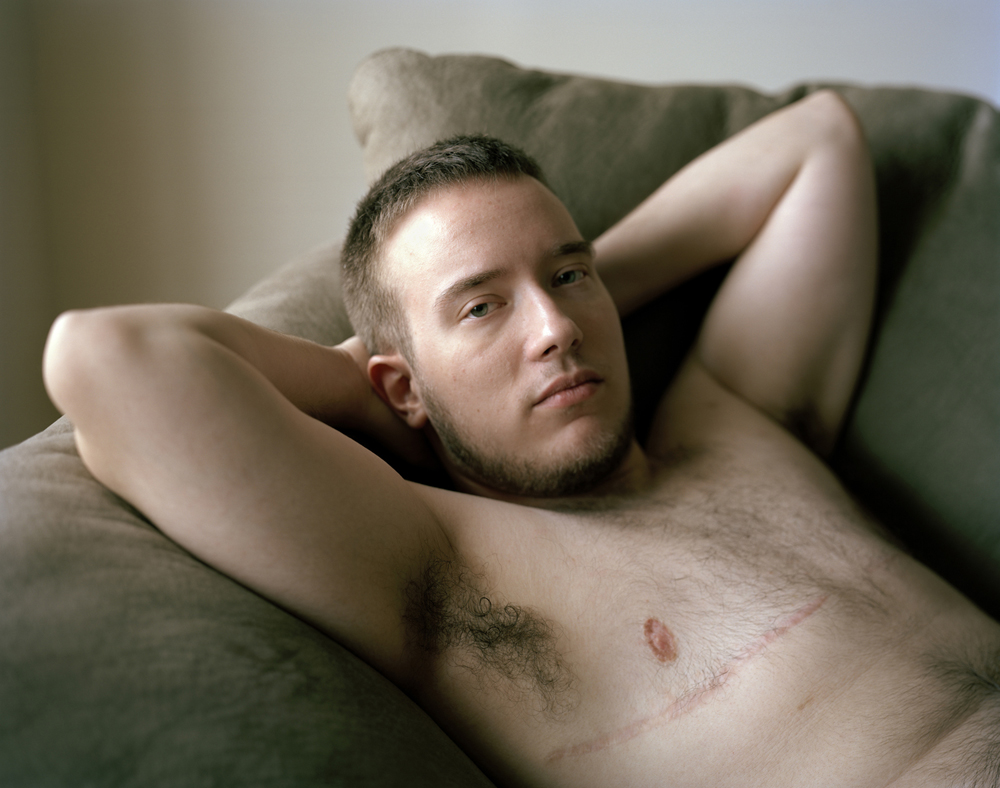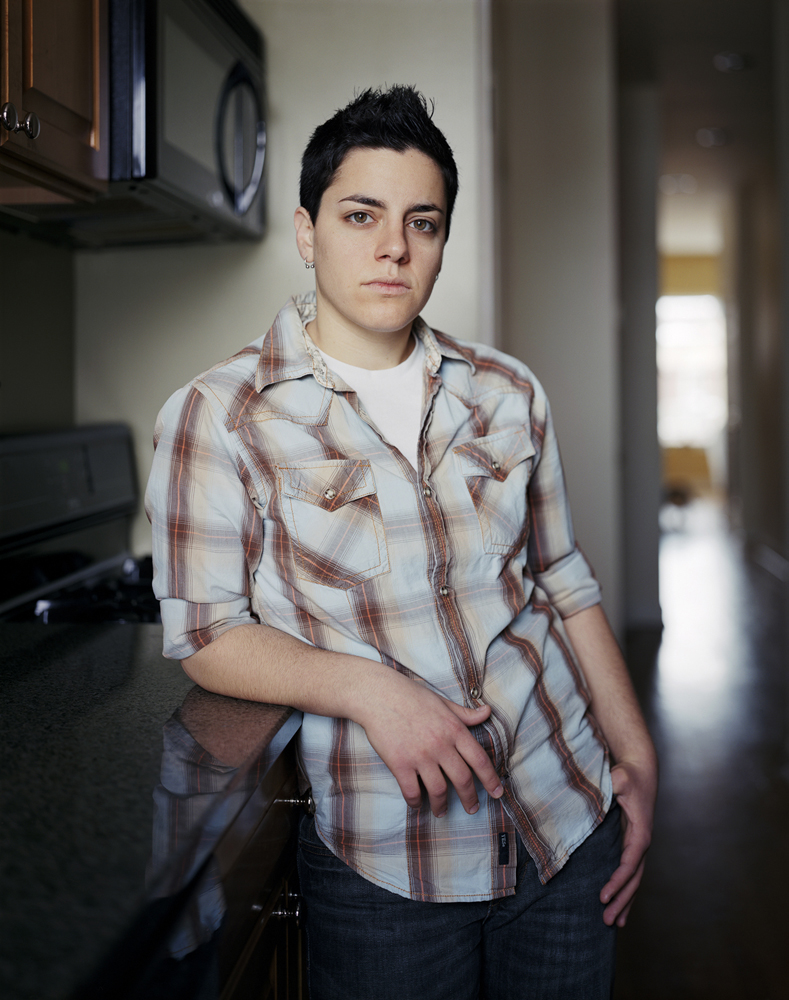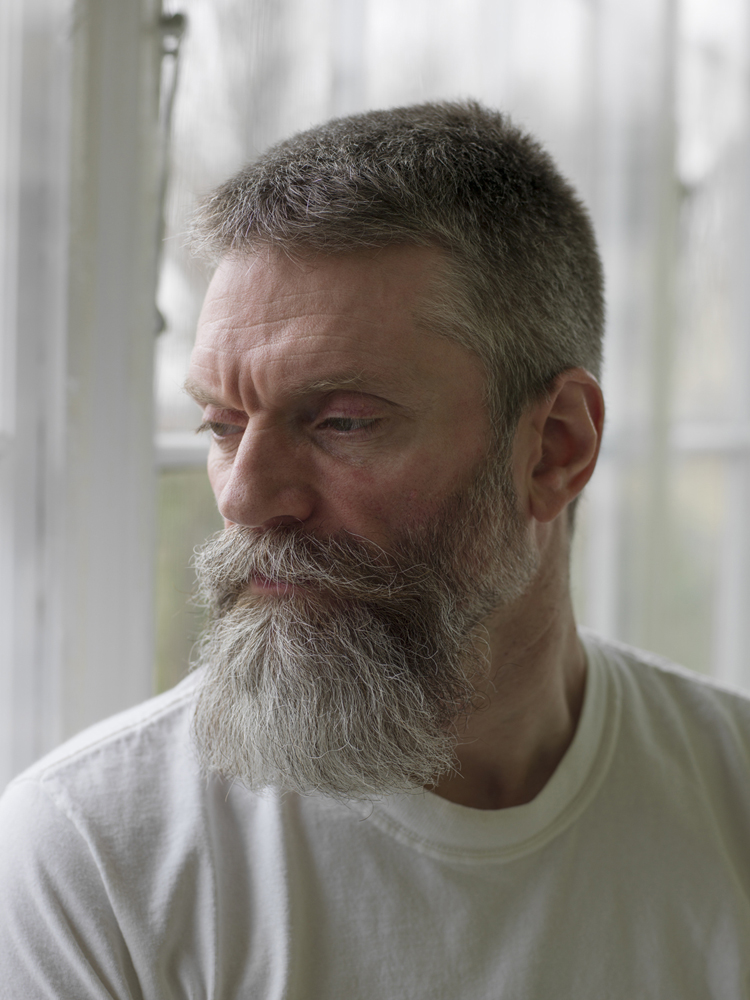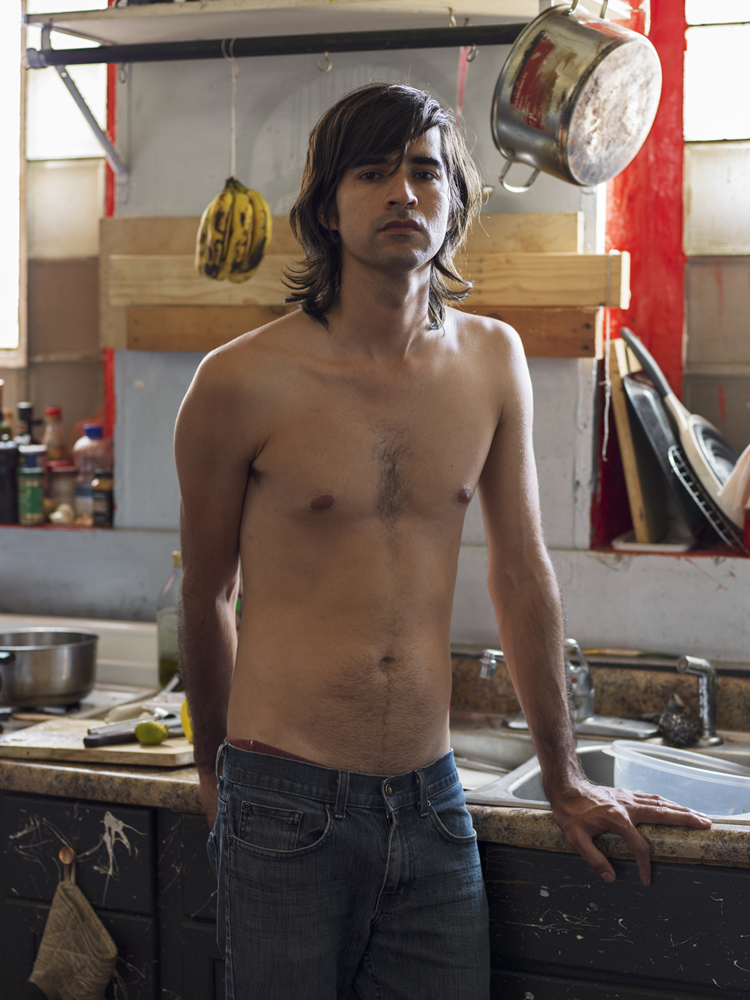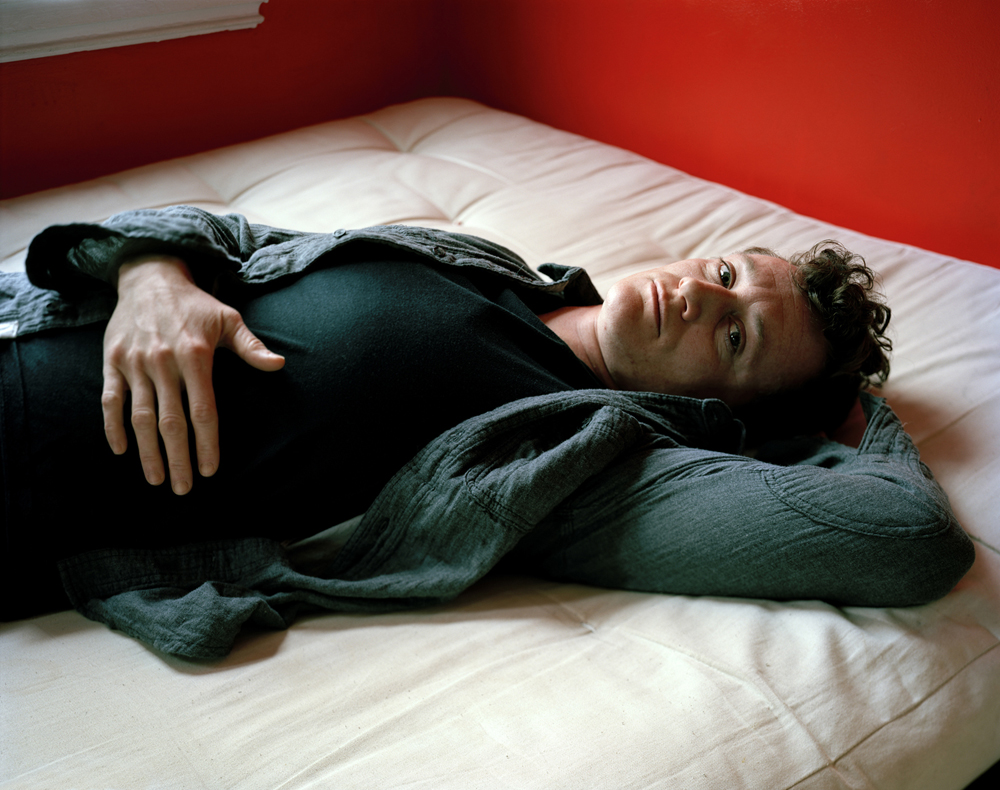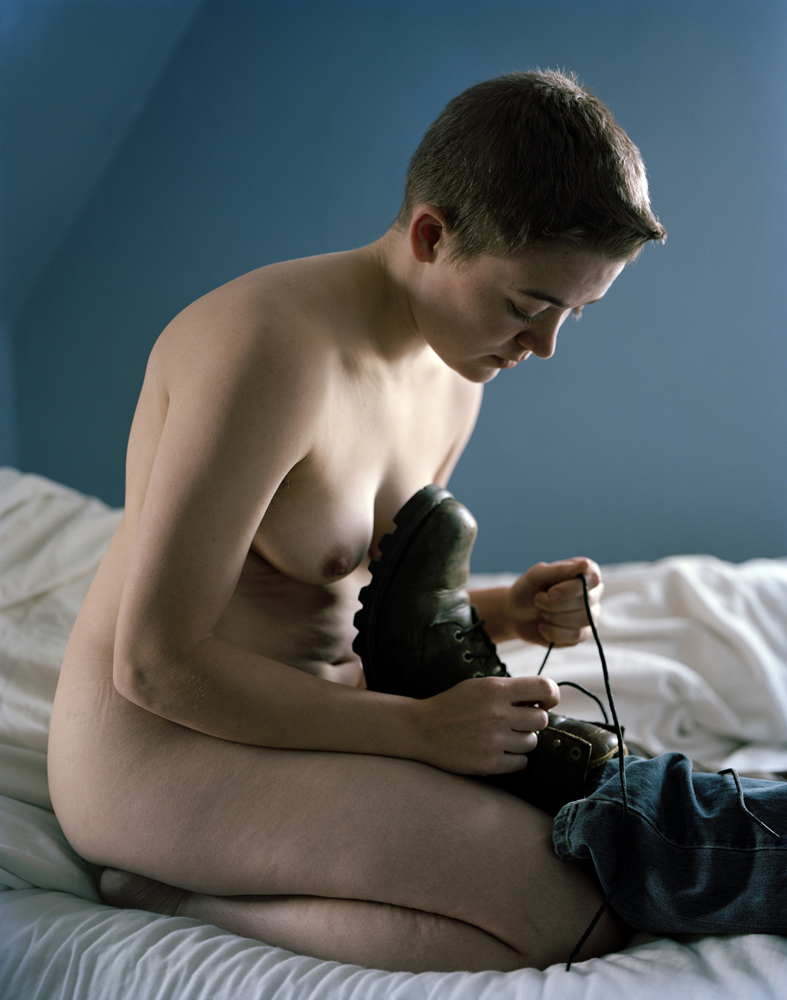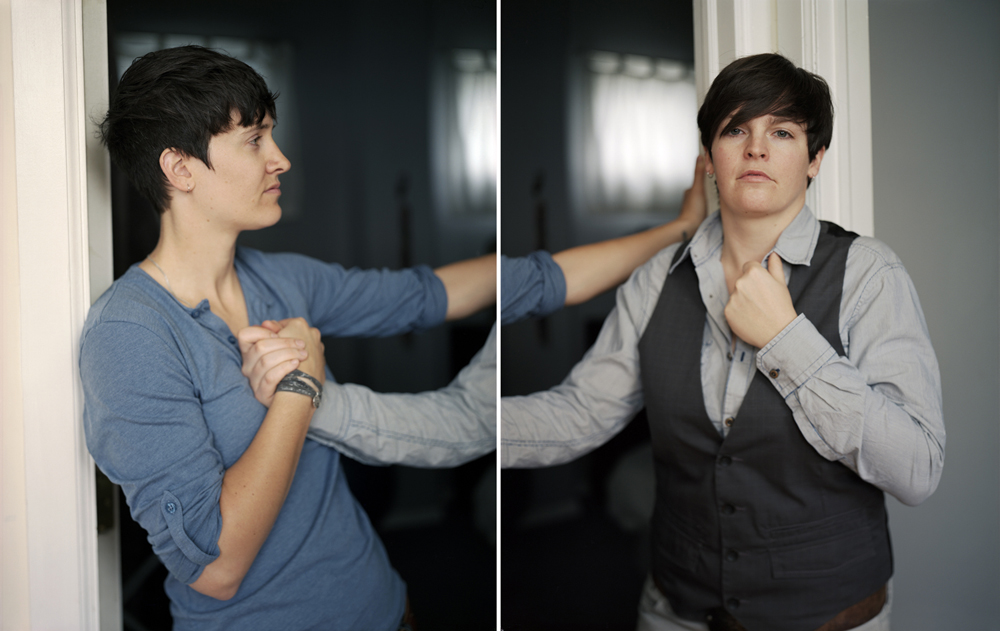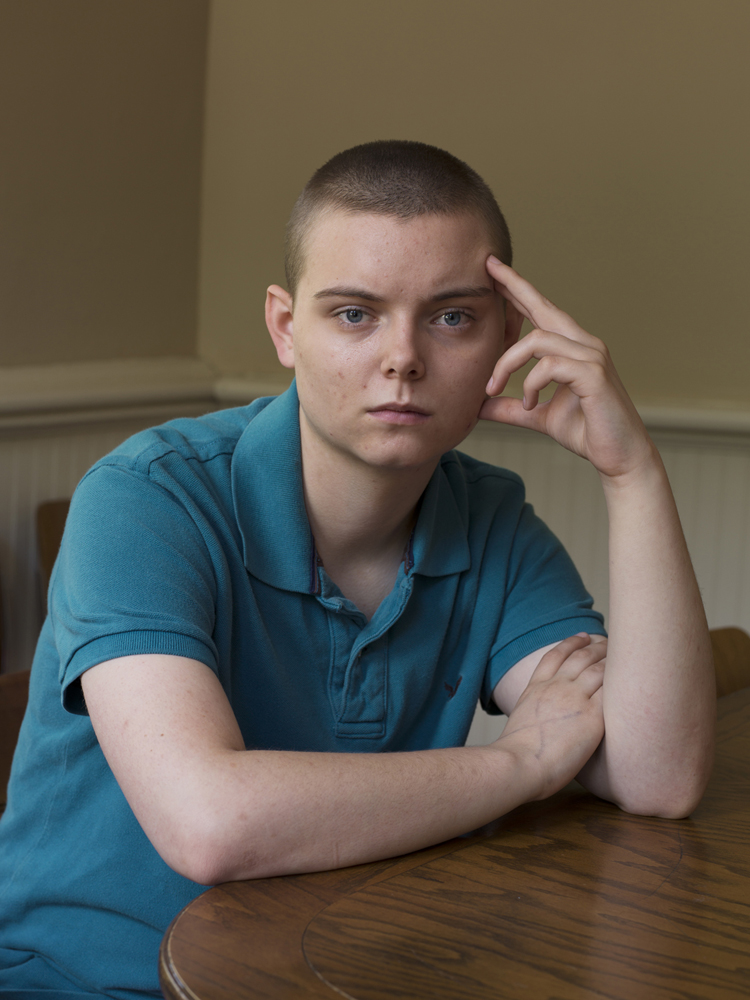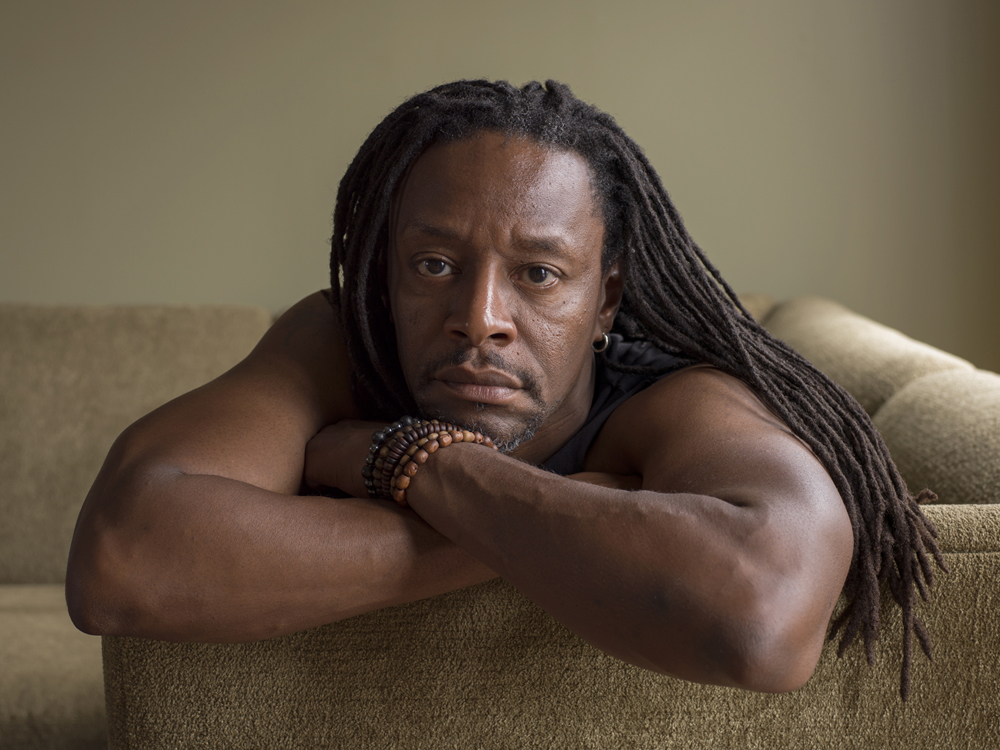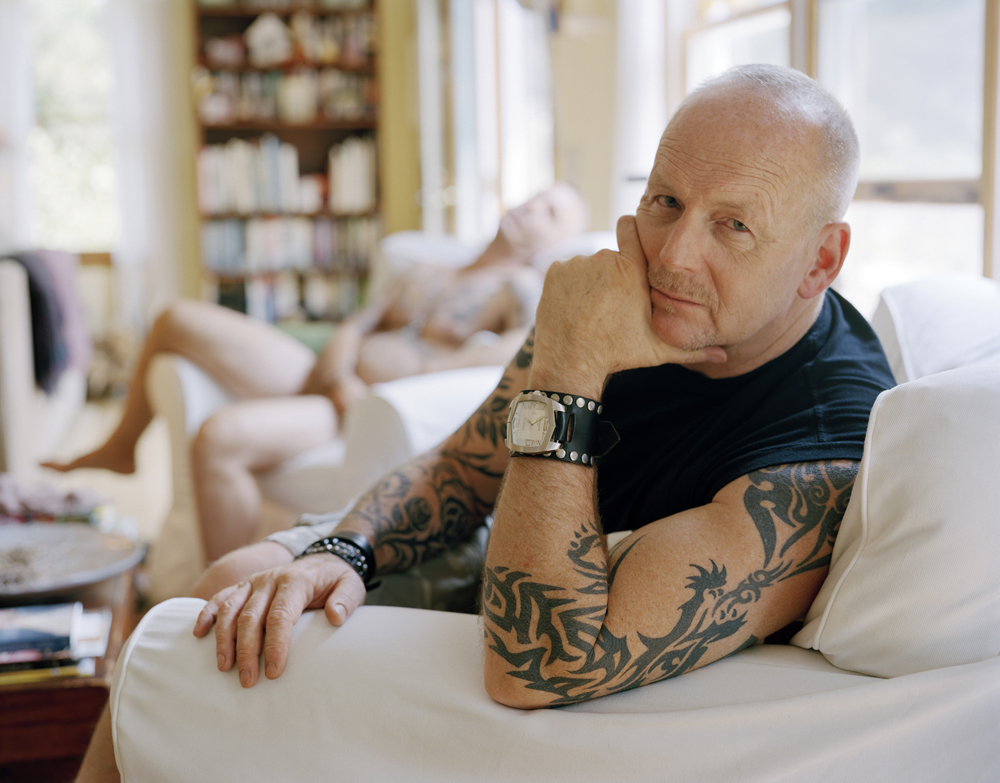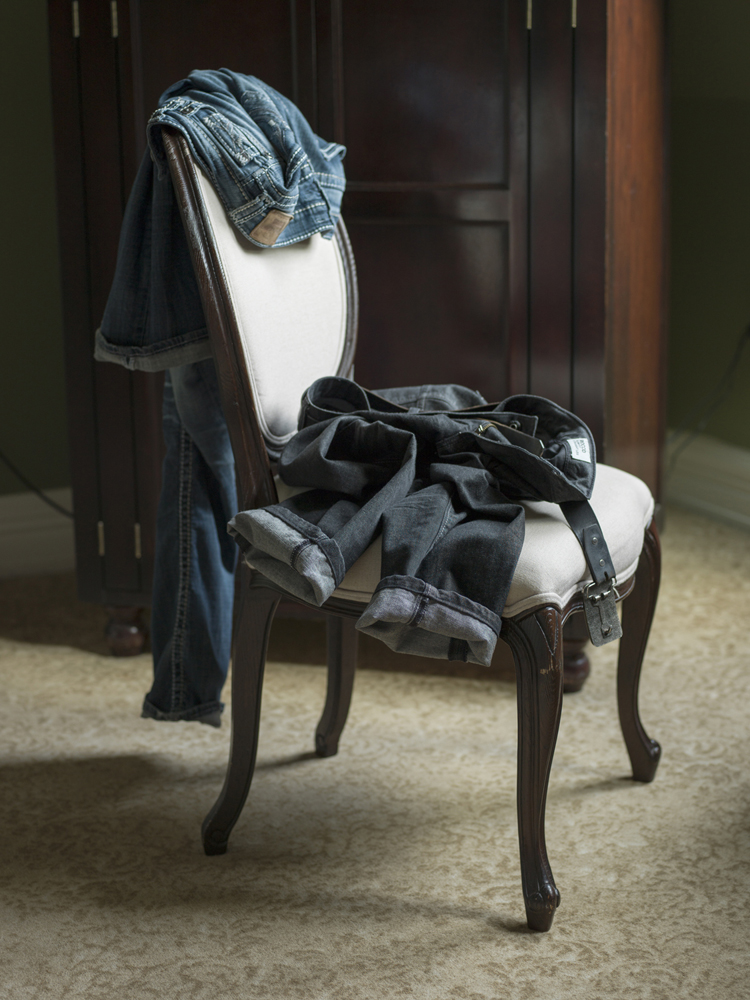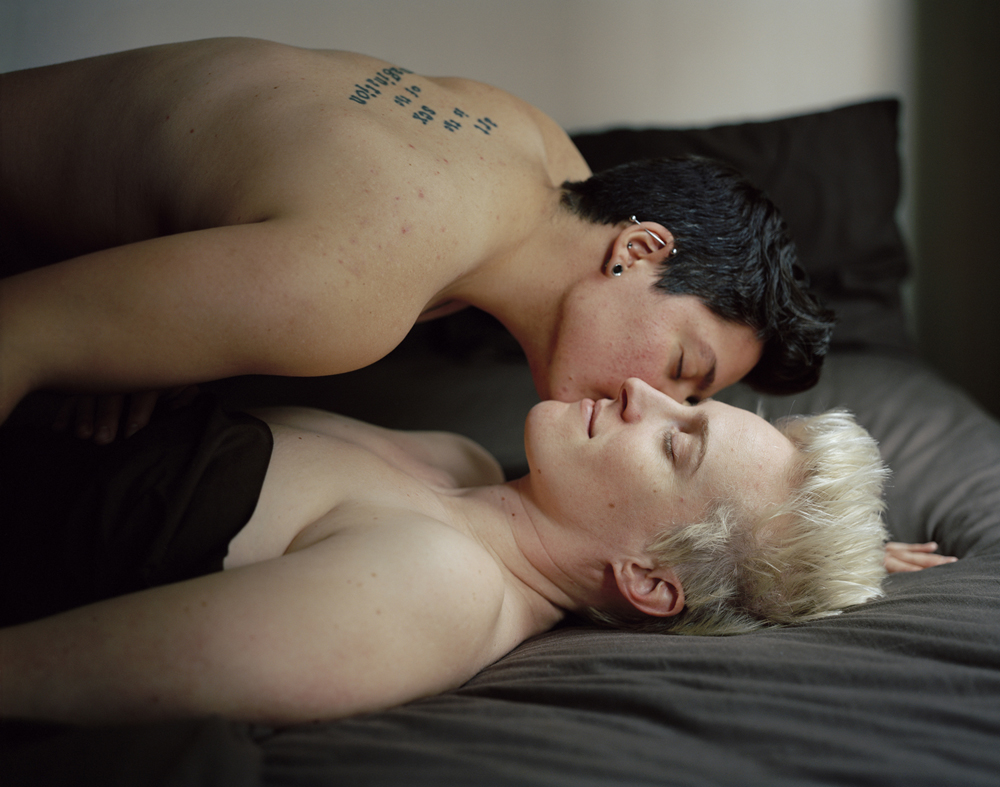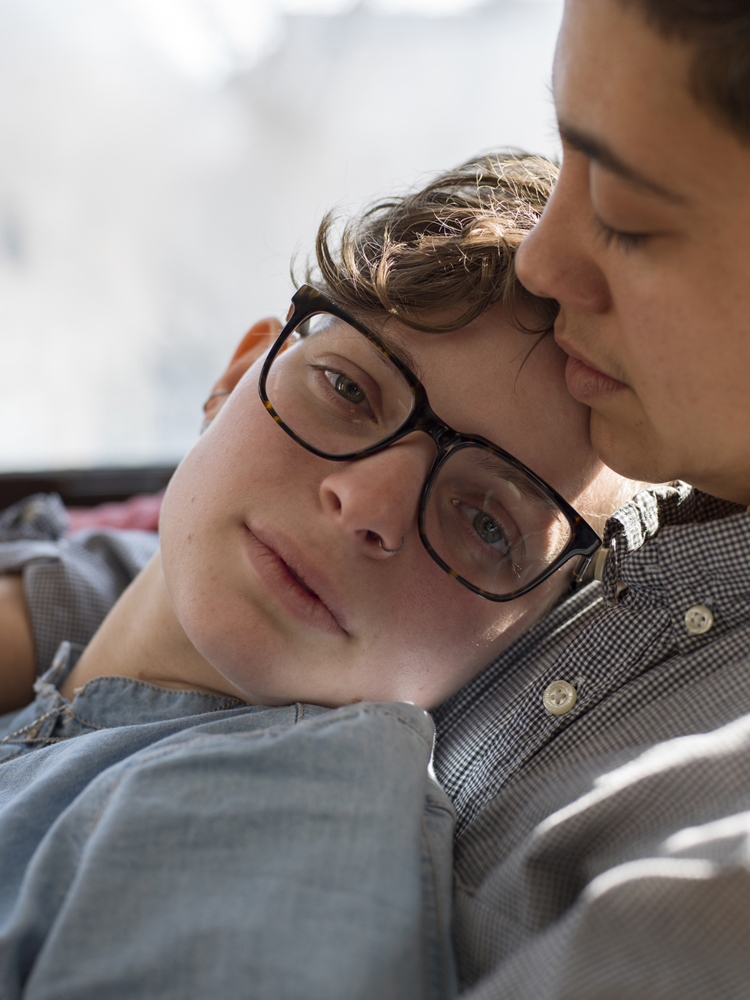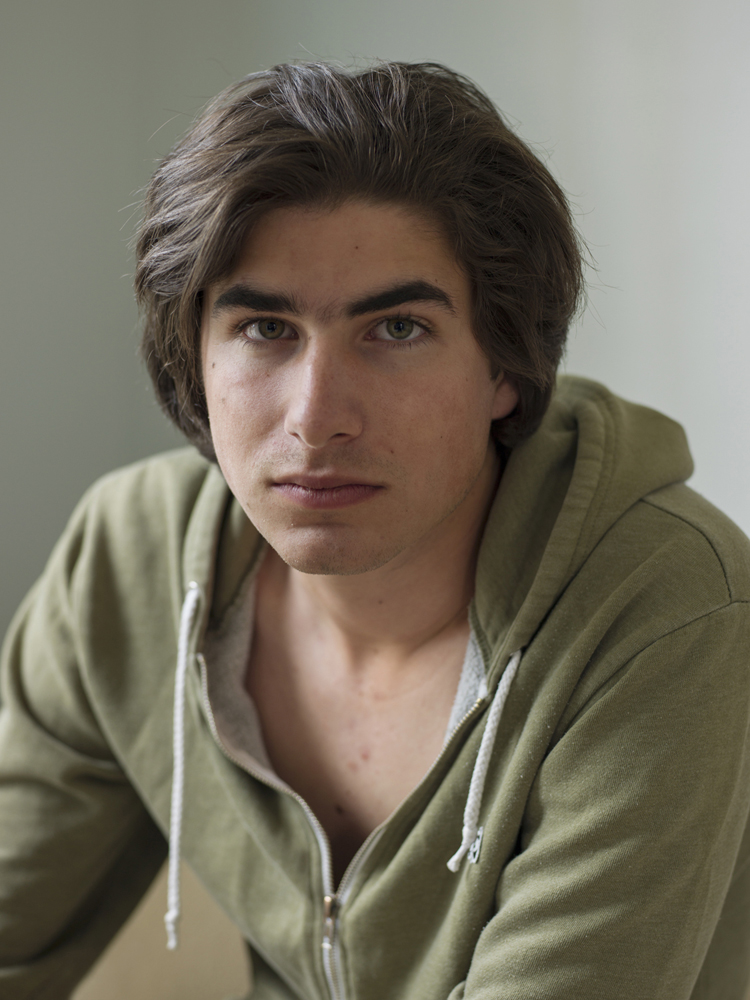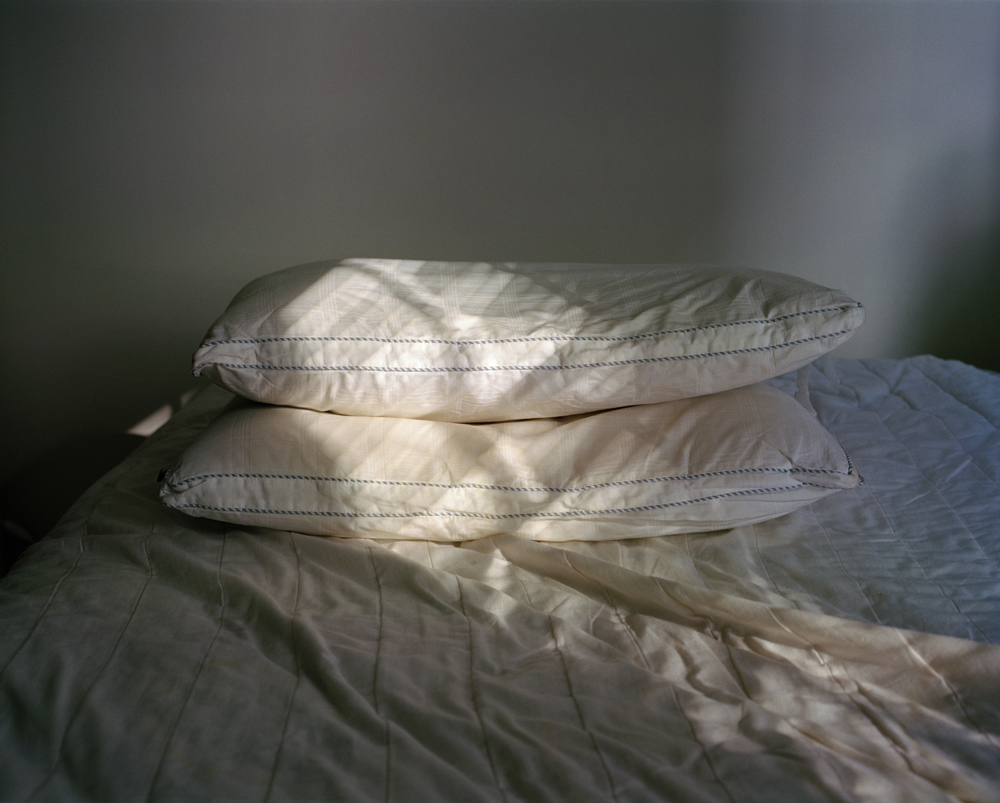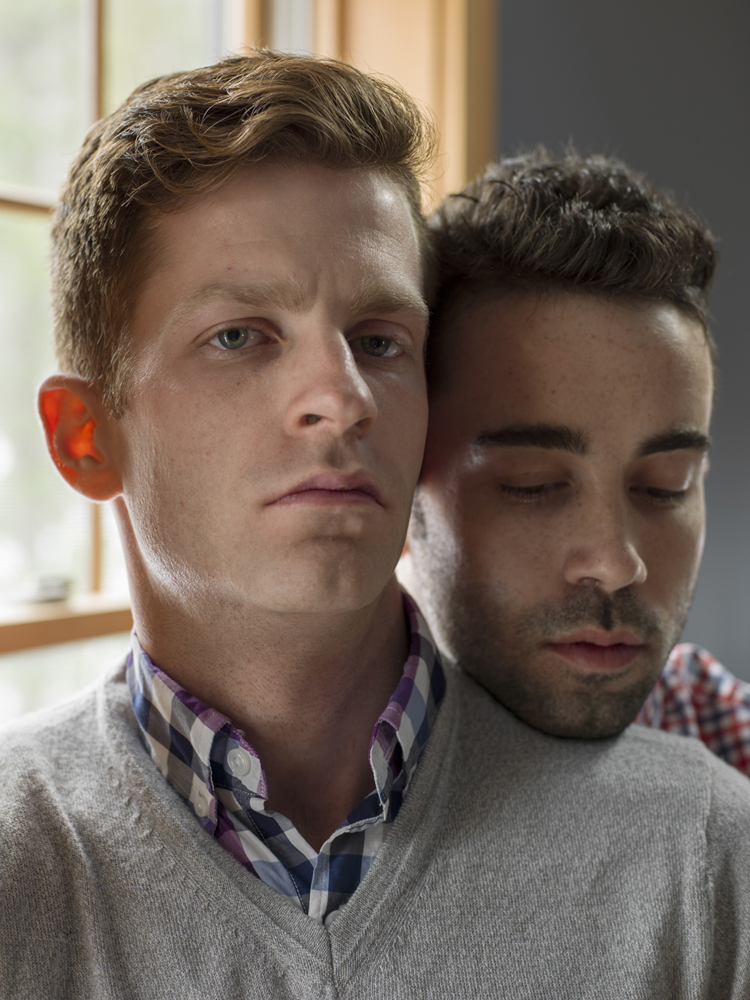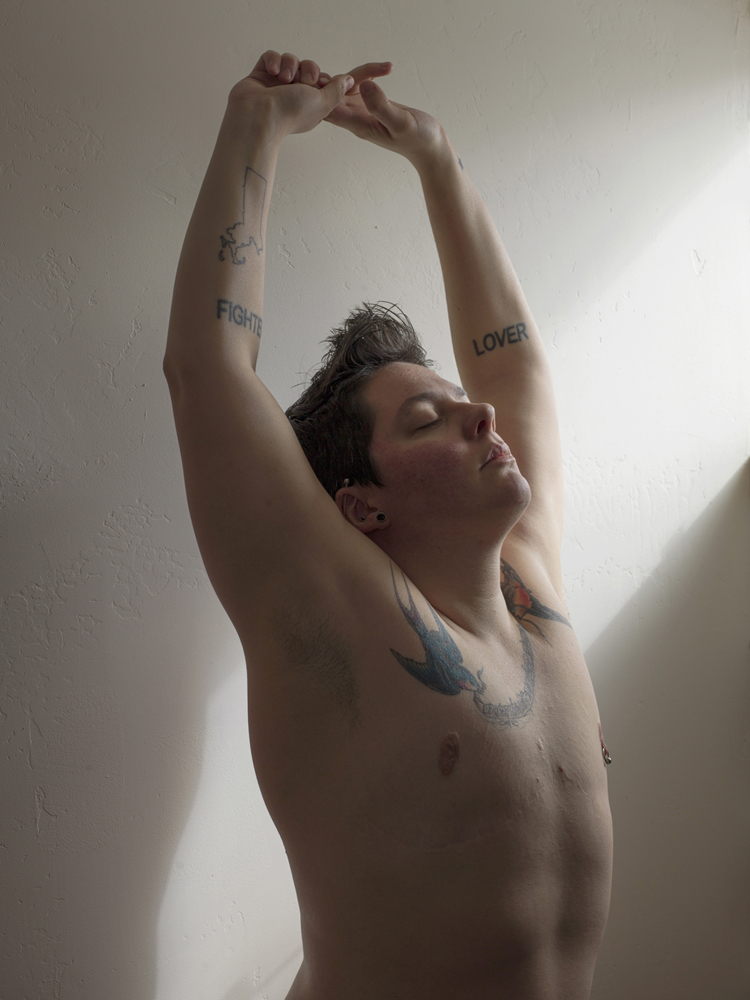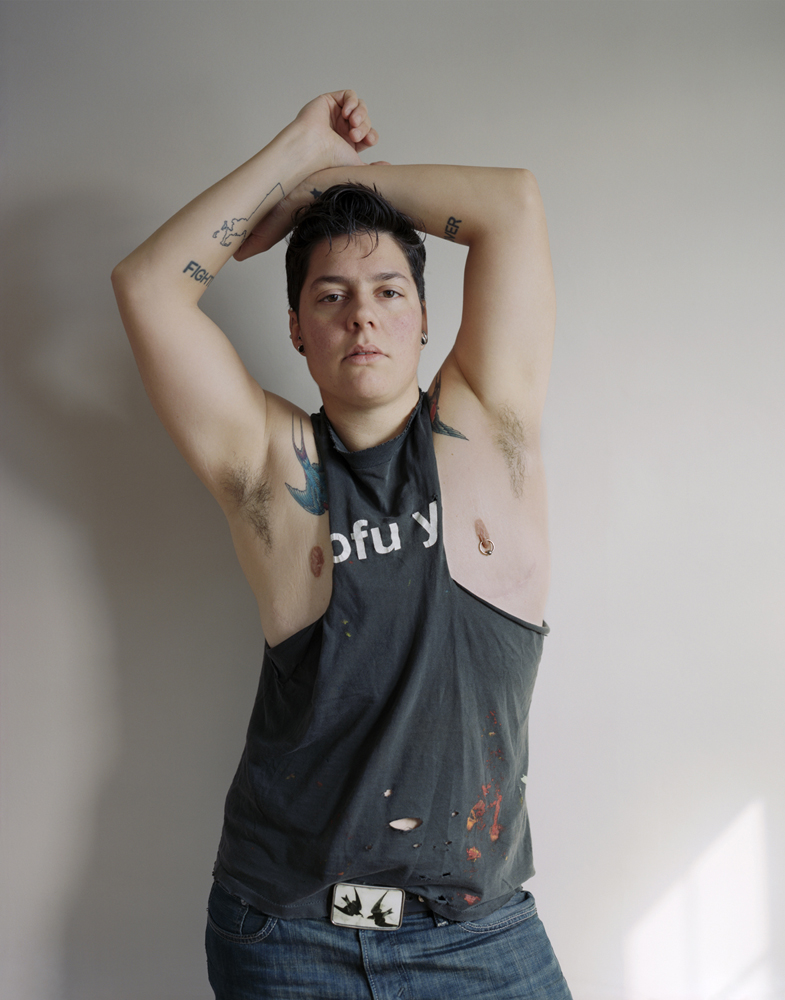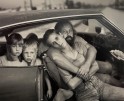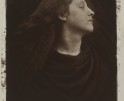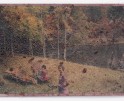Jess T. Dugan: The States Project Missouri
I have been following Jess T. Dugan’s trajectory for some time now, starting in Boston, when my friend Suzanne Revy told me about Jess and her stellar work, then to Chicago where she received her MFA from the Columbia College of Art and brought her work to a new level–also acquiring gallery representation at a major American gallery (Catherine Edelman Gallery). She now resides in Missouri and I’m beginning to think it doesn’t matter where she lands, as each city adds a knowing to her projects and a broadening community. Jess has been a long time observer of community and her rich portrait capture allows for a unique intimacy and understanding of specific worlds.
Jess takes on the Missouri States Project Editor as a fairly new resident, but as an engaged photographer, she presents a week of wonderful Missouri image makers. An interview with Jess follows.
©Jess T. Dugan, courtesy of Catherine Edelman Gallery
Jess T. Dugan is an artist whose work explores issues of gender, sexuality, identity, and community. Dugan holds an MFA in Photography from Columbia College Chicago, a Master of Liberal Arts in Museum Studies from Harvard University, and a BFA in Photography from the Massachusetts College of Art and Design.
Dugan’s work has been exhibited internationally at the Smithsonian National Portrait Gallery, the San Diego Museum of Art, the Cornell Fine Arts Museum at Rollins College, the Catherine Edelman Gallery, the Grey House Gallery in Krakow, Poland, the Griffin Museum of Photography, Gallery Kayafas, Carroll and Sons Gallery, the Leslie/Lohman Museum of Gay and Lesbian Art, and at many colleges and universities nationwide.
Dugan’s photographs have been featured in the New York Times, CNN, The Advocate, Slate, The Huffington Post, and the Boston Globe.
Her photographs are in the permanent collections of the Museum of Fine Arts, Boston, the Museum of Fine Arts, Houston, the Harvard Art Museums, the Birmingham Museum of Art, the Grand Rapids Art Museum, the Cornell Fine Arts Museum at Rollins College, the DePaul Art Museum, Fidelity Investments, JP Morgan Chase, and the Kinsey Institute for Research in Sex, Gender, and Reproduction. Her work is also included in the Midwest Photographer’s Project at the Museum of Contemporary Photography in Chicago, IL.
Dugan’s first monograph Every breath we drew was published in 2015 by Daylight Books and coincided with a solo exhibition at the Cornell Fine Arts Museum. Dugan is the recipient of a Pollock-Krasner Foundation Grant, an Artist Fellowship from the Regional Arts Commission in St. Louis, and was selected by the White House as a 2015 Champion of Change. In 2016, Dugan was honored as a Commended Artist by the Smithsonian National Portrait Gallery in Washington, D.C. for her photograph Self-Portrait (Muscle Shirt), exhibited in The Outwin 2016: American Portraiture Today.
In 2015, Dugan founded the Strange Fire Artist Collective to highlight work made by women, people of color, and LGBTQ artists. Jess is represented by the Catherine Edelman Gallery in Chicago, IL.
Every breath we drew (2011- )
Every breath we drew explores the power of identity, desire, and connection through portraits of myself and others. Working within the framework of queer experience and from my actively constructed sense of masculinity, my portraits examine the intersection between private, individual identity and the search for intimate connection with others. I photograph people in their homes, often in their bedrooms, using medium and large format cameras to create a deep, sustained engagement, resulting in an intimate and detailed portrait.
I combine formal portraits, images of couples, self-portraits, and photographs of my own romantic relationship to investigate broader themes of identity and connection while also speaking to my private, individual experience. The photographs of men and masculine individuals act as a kind of mirror; they depict the type of gentle masculinity I am attracted to, yet also the kind I want to embody. Similarly, the photographs of relationships speak to a drive to be seen, understood, and desired through the eyes of a another person; a reflection of the self as the ultimate intimate connection. By asking others to be vulnerable with me through the act of being photographed, I am laying claim to what I find beautiful and powerful while asking larger questions about how identity is formed, desire is expressed, and intimate connection is sought.
Thanks so much for being our Missouri States Project Editor! I know you are fairly new to the state—how did you land in the South?
Hi Aline! Thank you so much for inviting me to be a part of the States Project!
I am indeed relatively new to Missouri- it’s funny you call it the South because I have an ongoing debate with people about this. I was actually born in Mississippi and raised in Arkansas until I moved to Boston when I was 13. I have spent my whole life explaining to coastal folks that Arkansas is actually part of the South, not the Midwest. And now I find myself explaining that Missouri is in the Midwest, not the South (though it certainly has a Southern flair, in my opinion). Go figure. Anyway, I moved to St. Louis in the summer of 2014 with my partner Vanessa, who is an Assistant Professor of Social Work at Washington University in St. Louis.
What are some unique qualities to being a Missouri photographer?
You know, I’m not sure I’m the most qualified to answer this question. Though I live in St. Louis, my work is not tied to any particular place, and most of it is not made locally. One major perk of Missouri is that the cost of living is very low, which enables me to travel quite a bit to make work as well as to keep up with what is going on in the art world throughout the country.
Missouri has some wonderful art museums. In St. Louis, there is the Saint Louis Art Museum, the Contemporary Art Museum, the Pulitzer Foundation, and the Kemper Art Museum at Washington University, all of which are free and consistently have dynamic, engaging exhibitions and programing. Kansas City is home to the Nelson-Atkins Museum of Art and the Kemper Museum of Contemporary Art, and both cities have a variety of galleries and alternative exhibition spaces.
St Louis is home to the Regional Arts Commission, which offers Artist Support Grants (up to $3,000 each) and Artist Fellowships (10 annual awards of $20,000) for artists living and working in St. Louis. The Contemporary Art Museum also hosts a bi-annual competition called the Great Rivers Biennial which awards three artists a solo exhibition and a $20,000 award. The financial support of the arts combined with a plethora of affordable housing and studio space makes St. Louis an appealing city for artists.
How did you go about selecting photographers for this week?
All of the artists I chose are making exciting, dynamic, smart work that engages with larger social and cultural issues. Most of the photographers I chose for this week’s feature are people I have met since moving to St. Louis. The one exception is Joe Johnson, who I have known since my first year at the Massachusetts College of Art and Design, where he was a grad student and taught one of the first photography courses I took. He is now an Associate Professor at the University of Missouri in Columbia and is someone I consider a good friend and colleague. I’ve had the pleasure of visiting his classes many times over the past few years and have also remained inspired by his work for more than a decade.
When I first moved to St. Louis, I tried to meet as many artists as I could in order to quickly immerse myself in the community. One of the first people I met was David Johnson, who graciously agreed to meet me for lunch after I found his website and reached out to him. He quickly became a good friend and colleague and introduced me to many of the folks in the local art community.
I met both Jen and Priya in slightly more coincidental ways. Though Priya and I were familiar with each other’s work, we met in person for the first time at a Southwest gate at the airport in St. Louis in 2015 while waiting to board a flight to New York to participate in the annual New York Times Portfolio Review.
Jen and I had the good luck of sitting next to one another at a Carrie Mae Weems lecture at Washington University in 2015 and immediately struck up a conversation, becoming both friends and colleagues. I have since featured both Jen and Priya’s work on the Strange Fire Artist Collective, which I co-founded in 2015 to feature work by women, people of color, and LGBTQ artists.
I have only recently discovered the work of Kat Reynolds, who was highly recommended to me by several people, and am looking forward to watching it continue to develop.
I have followed you and your career from Boston to Chicago and now to Missouri. Each city must certainly inform your work, and if not the city, the community that you surrounded yourself with. Can you speak to that?
I have been thinking a lot recently about the idea of being local to any one place in our transient, global world. Having lived in many cities and not really being “from” anywhere, I don’t strongly identify with any one place. Both Boston and Chicago still feel like home to me in many ways and I try to spend time in both cities as much as I can.
I got my BFA in Photography from MassArt in Boston, which was an amazing experience. I was fortunate to work with the stellar photography faculty, which at the time included Abelardo Morell, Nick Nixon, Laura McPhee, David Hilliard, Shellburne Thurber, Barbara Bosworth, Sage Sohier, and several others. Many of my current relationships, both personal and professional, began at MassArt or were made through the greater MassArt community. It’s also worth noting that MassArt is the only public art college in the country, which makes it accessable to a broader range of students, leading to a diverse, dynamic student body.
Outside of MassArt, I was part of a very close and dynamic LGBTQ community in Boston, which was hugely important to me both personally and professionally.
I stayed in Boston after college and that’s where I really began to pursue a life as an artist, working during the days at the Harvard Art Museum and making work in my homemade darkroom in the evenings and on weekends. I was fortunate to become represented by a commercial photography gallery, Gallery Kayafas, in 2008, an experience that was very formative to me as a young artist.
I moved to Chicago for graduate school in 2011 and, though I initially missed the community I had in Boston, Chicago quickly began to feel like home. I spent three years getting my MFA at Columbia College Chicago, during which time I also worked at the Museum of Contemporary Photography. I worked closely with my mentors Dawoud Bey and Kelli Connell and grew tremendously as a person and an artist. The photography community in Chicago is truly amazing and incredibly dynamic. There is a wonderful sense of comradery among artists and there are more exhibitions, lectures, and events than one person can possibly attend.
Since early 2014, I have been represented by the Catherine Edelman Gallery in Chicago, which has been wonderful in every way. They have exhibited my work in the gallery as well as at art fairs including AIPAD, Expo Chicago, Art Miami, and Paris Photo Los Angeles.
I try to spend as much time in Chicago as I can and am usually there at least every other month for photography events, to make work, or to see friends.
I believe that most portraits are a mirror of sorts. We select who we photograph, why we photograph them, and certainly project something of ourselves into the image making. Does this idea resonate with you?
Absolutely. I learn about myself and the world around me through making photographs. I have worked on a variety of projects over the years, each of which requires a slightly different dynamic between myself and my subjects, but all of my work is heavily informed by my own identity and experience in the world.
With your well celebrated project, Every Breath You Drew, you are photographing a particular idea of masculinity. What is unique to this examination is that you include self portraits, romantic connections, and strangers, all combining to create an intimate experience of self. What sparked the idea of combining these segments and what have you learned by focusing on masculinity in a variety of ways?
Every Breath We Drew is perhaps the most subjective body of work I have made, and it is heavily informed by my personal journey to define my own sense of masculinity. The project as a whole centers around the process of defining your own authentic identity and then seeking meaningful connection with others, whether romantic, communal, or otherwise.
For some of my projects, there is a defined set of criteria for participants, such as “gay couples,” “transgender people over the age of 50,” etc. However, with Every Breath We Drew, there was no such criteria, and the identities of the people I photographed were quite varied and diverse. I sought out people who I felt connected to. My process of choosing subjects is not so different from romantic attraction, in that I can’t always explain what exactly it is that makes me want to photograph someone. There is a certain kind of energy or way of being in the world that I am attracted to, photographically.
With Every Breath We Drew, I was drawn to individuals who embodied a gentler, more expansive version of masculinity than the hegemonic version we generally see represented in the world around us. This included masculine of center female-bodied folks as well as straight-identified, cisgender men (and a range of other identities as well). In retrospect, I was drawn to people who either reflected something I saw in myself or had a characteristic that I wanted to embody. In many ways, I was seeking out a reflection of my own sexuality, gender, and identity and was attempting to find connection with others through the act of making portraits.
You mention the self-portraits, of which there are several throughout the series. I believe it is important to include myself in the work I’m making, as it implicates me within the larger conversation I hope to facilitate through my work. I find that telling my own story creates space for people to connect with me and then tell me theirs, which is integral to my work and incredibly meaningful to me personally. Conceptually, I think of Every Breath We Drew as one big, ongoing self-portrait, through which I am constantly seeking to better understand myself through my relationships with others.
The last two years have been amazing for you with a trip to the White House, your work featured in the National Portrait Gallery, joining the roster of the Catherine Edelman Gallery and more—all so well deserved. What can you share about what helped move your career to the next level?
Thank you so much! The last few years have indeed been amazing, and I am very grateful for all of the opportunities I have had.
I think the most important thing is to continually strive to make better and better work and then find a way to get it out into the world. There is no magic formula, but working hard and being kind and respectful to others goes a long way.
One thing that is not always evident is how much work goes into a successful career. I am constantly working, whether I’m actually making photographs or maintaining the business side of things. For every grant or award I receive, I have, probably, 25 rejection letters for ones I did not. Artists (myself included) generally don’t advertise their failures, but anyone with any measure of success most likely experiences rejection constantly. You’ve just got to keep making the work and believing in what you do no matter what.
Any thoughts on making work in the next four years? This shift in the administration surely makes us consider the work we put forth.
Though my work has always been socially and politically motivated, it feels more important now than ever before to continue speaking our truths and making work that matters. As many people have already said, now is the time when it is most important for artists to go to work.
Since 2013 I have been working on To Survive on this Shore, a collection of photographs and interviews with transgender and gender-variant people over the age of 50. To date, I have photographed 73 people throughout the United States and intentionally seek out subjects whose lived experiences exist within the complex intersections of gender identity, age, race, ethnicity, sexuality, socioeconomic class, and geographic location. I intend to finish photographing for this series in 2017 and plan to move towards a book and exhibition in 2018.
What’s next?
As I mentioned, this year I plan to finish photographing for To Survive on this Shore and am currently making travel plans for the final trips. I have many people throughout the country I want to include and am slowly making my way to each of them. I’m very excited to complete the project and begin working on a book and exhibition. Now more than ever, it feels important to get this project out into the world.
I am also continuing to photograph for Every Breath We Drew as well as my ongoing body of work focusing on my family, which includes photographs of my mom, photographs of my partner Vanessa, and self-portraits.
In terms of exhibitions, I have several solo and group shows planned for 2017 and 2018. The exhibition you mentioned at the National Portrait Gallery, The Outwin 2016: American Portraiture Today, is on display at the NPG until January of 2017 and will then travel to the Tacoma Art Museum in Tacoma, WA, the Art Museum of South Texas in Corpus Christi, TX, and to the Kemper Museum of Contemporary Art in Kansas City, MO throughout 2017 and 2018. I am very honored to be included in this exhibition and hope to travel to see it in several of the forthcoming venues.
Every Breath We Drew will be exhibited as a solo exhibition at Redline in Denver, CO (organized by the Colorado Photographic Arts Center) in March 2017, at the University of Tulsa in Tulsa, OK in September 2017, and at the University of Missouri in St. Louis in the spring of 2018. I’ll have work in a few group exhibitions, including at the Leslie/Lohman Museum of Gay and Lesbian Art in New York and at the Chiang Mai Photography Festival in Thailand.
I’ll be teaching several portrait workshops this year, including “The Intimate Portrait” at the Fine Arts Work Center in Provincetown, MA in July 2017 and “The Collaborative Portrait” at the Santa Fe Photographic Workshops in October 2017. I also regularly lecture and teach workshops at colleges and universities around the country and am looking forward to doing even more of that moving forward.
Mostly, I’m grateful I get to spend the majority of my time working as an artist and am excited to keep making work and connecting with others through that process.
And finally, describe your perfect day.
My perfect day… this is a tough question because there are so many ways a day could be perfect! No matter what, it would definitely start with coffee, usually three cups (I should probably cut down). It would also include making portraits, taking a walk (preferably near the water), and a good meal or two in the company of friends. The evening might include many things: country dancing, listening to music, perusing photo books. Then I would most certainly end the day drinking a Manhattan or sipping whiskey, preferably outside by a campfire, preferably with people I love.
Posts on Lenscratch may not be reproduced without the permission of the Lenscratch staff and the photographer.
Recommended
-
LES RENCONTRES d’ARLES 2024: A VISUAL FEASTJuly 14th, 2024
-
Arresting Beauty: Julia Margaret CameronJuly 5th, 2024
-
Lorraine O’Grady: The Knight, or Lancela Palm-and-SteelJune 23rd, 2024
-
Tyler Mitchell: Idyllic SpaceJune 21st, 2024

